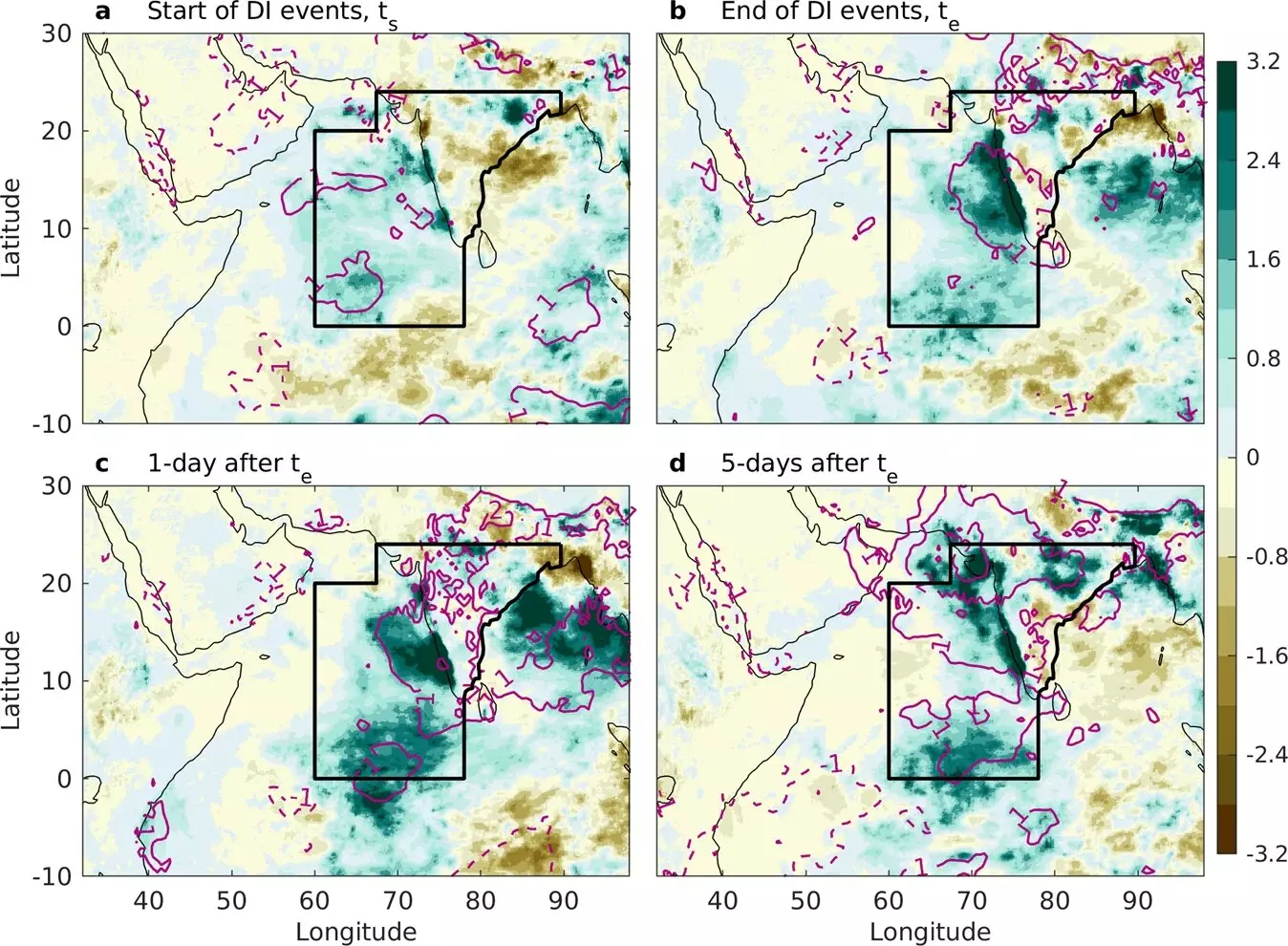In 2018, the Indian state of Kerala experienced a devastating series of floods that led to the death of over 400 people and the displacement of millions. Flooding during the monsoon season is a common occurrence in tropical Asia, but the ability to predict the severity of these floods has been a major challenge. However, new research conducted by a team from the Weizmann Institute of Science has shed light on a previously unknown factor that may contribute to extreme flooding. The study suggests that the arrival of dry air, rather than wet air, may actually precede heavy rainfall during the monsoon season.
The Complexity of the Indian Monsoon
The monsoon rains that affect the Indian subcontinent from July to September are a complex weather phenomenon influenced by various factors, including global jet streams. The Weizmann study has identified a specific type of airstream, known as a dry intrusion, as a previously unrecognized complicating factor. Traditionally, dry intrusions were believed to cause breaks in the monsoon season, resulting in periods of drier weather. However, the researchers found that these dry air intrusions were actually associated with increased rainfall, rather than dry spells.
To understand the mechanism behind this phenomenon, the researchers used a model based on mechanical physics that tracked the movement of air packets. Through their analysis, they discovered that the dry air of the intrusions acted as a sponge, absorbing water from the Indian Ocean. The greater the moisture difference between the ocean surface and the dry air, the more water was absorbed and transported towards India’s west coast. This influx of moisture ultimately resulted in heavier rainfall in the affected regions.
The researchers believe that the relationship between dry intrusions and increased rainfall has been largely overlooked due to the focus on longer-term climate patterns and slower phenomena. While the dynamics of dry intrusions occur on a shorter time scale of days or weeks, monsoon dynamics typically operate on months or years. This discrepancy in time scales may explain why the phenomenon was mistakenly associated with drier weather rather than its actual impact on rainfall.
One of the significant implications of this research is the potential for improved flood prediction in regions like India and Bangladesh, where millions of people live in flood-prone areas. By monitoring dry intrusions, which is already possible today, forecasters could enhance the accuracy of predicting specific rainfall peaks that could lead to flooding. With advanced warnings extended to about a week, communities at risk could prepare adequately and potentially evacuate if necessary, potentially saving numerous lives.
The Weizmann Institute research team plans to continue studying the effects of dry intrusions on Asian monsoons and refining their model. They aim to gain a deeper understanding of how and why these patterns form and expand their research to investigate dry intrusions in other parts of the world. By doing so, they anticipate improving our ability to predict heavy rains and anticipate severe flooding in the future.
This groundbreaking study by the Weizmann Institute of Science has uncovered a surprising link between dry air intrusions and severe flooding during the Indian monsoon season. By challenging previous assumptions and exploring the intricate relationship between dry air and increased rainfall, the research team has cast new light on the dynamics of monsoon weather patterns. The potential for improved flood prediction and associated flood preparedness has the potential to save countless lives in regions vulnerable to monsoon-related disasters. As scientists continue to unravel the mysteries of our climate system, it is clear that understanding the complexities of weather patterns is crucial for effective disaster mitigation strategies and safeguarding the livelihoods of millions of people worldwide.


Leave a Reply